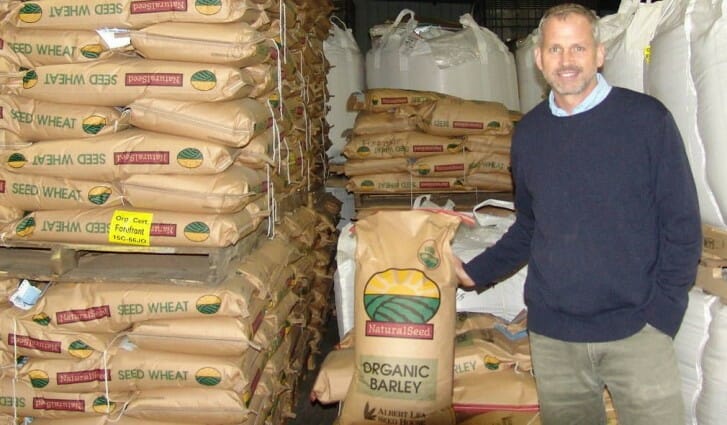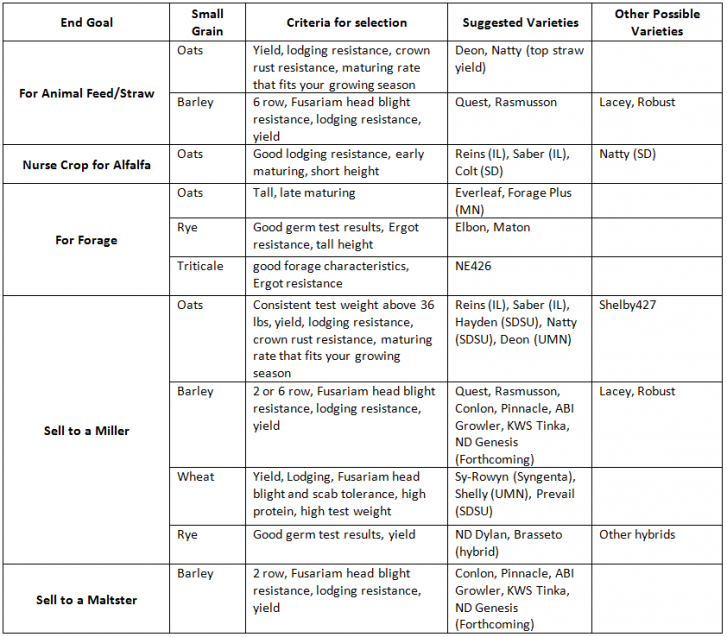Small Grains Variety Selection Kicks off Shared Learning Call Series
In my new role at Practical Farmers, one of the really exciting projects I’ll be working on is developing a small grains marketing pilot. Practical Farmers has gathered a group of farmers and small grains buyers throughout Iowa, Minnesota, and Wisconsin to work through the logistics of growing and selling these crops in the upper Mississippi basin. Last Friday we had our kick-off shared learning call where our pilot participants gathered to learn about variety selection for small grains on their farms. Mac Ehrhardt of Albert Lea Seed was our guest star, guiding us through the process of selecting the best small grain for each farmer’s operation.

Speaker Mac Ehrhardt poses with wheat and barley seed at Albert Lea Seed House. Photo Credit: Marie Wood. Nov 28, 2016. “Albert Lea Seed House Finds Success with Non-GMO and Organics.” www.TheLandOnline.com
In a nutshell, Ehrhardt suggested this process for identifying a small grain that will work well on your farming operation:
- Identify your goals. Would you like to sell grain to a miller (or maltster for barley)? Plant a nurse crop for alfalfa? Grow more forage to offset hay costs? Sell grain to a neighbor as animal feed? Look at the options available to you to make the most of small grains in your business.
- Talk to your buyer. Who are the millers (or maltsters) and grain elevators in your area? What kinds of grains are they buying? Ehrhardt gave an example – grain buyers west of the Mississippi expect hard red winter wheat. East of the Mississippi? Soft. Find out if the buyers have any suggestions about variety selection they can pass along from their other growers in your area. If you’re selling to a neighbor for animal feed, what kinds of grains are they looking to incorporate into their rations?
- Consider the conditions on your farm.
- Where would you add small grains into your rotation? Wheat and barley are susceptible to fusariam head blight (also known as scab) transferred from corn residues; if you’re hoping to plant into a field coming out of corn and practicing no-till — these crops won’t thrive. If you’re harvesting for animal feed, it could even be dangerous as scab infected grains are toxic to livestock.
- How hot are the summers? Small grains are a spring crop that don’t like sweltering summer days, probably err on the side of early maturing varieties if you’re in Iowa.
Once you’ve worked through these steps you can start looking at varieties. Albert Lea Seed’s Variety Trial Page and Practical Farmer’s Small Grains Page have handy links to published variety trials, so you can sniff out varieties for yourself. I’ve also summarized the varieties recommended on the call by Mac Ehrhardt in the table below, organized by end use of the small grain.

